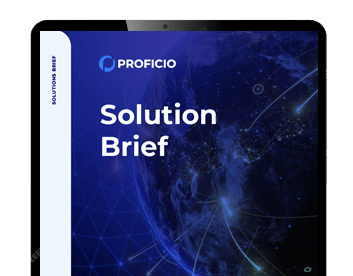Empowering cyber resilience with Proficio’s Proactive Protection Bundle: a ProSOC MDR enhancement.
In today’s ever-changing digital landscape, staying proactive against threats is essential. Strengthening cyber resilience means raising the cost and complexity for malicious actors to attack you.
Our ProSOC MDR enhancement bundle offers proactive defense measures and automated response capabilities, making it difficult for attackers to infiltrate your systems. Through risk-based vulnerability management, patch management, and active defense response, you will be able to increase the barriers for malicious actors, deterring their attacks.
Proactive Protection Bundle
Monthly cyber exposure assessments and reports, including:
Enhanced Cyber Resilience



The services provided by Proficio are excellent, the team is quick to respond and help resolve issues that occur.
Our overall experience with Proficio has been fantastic. Their level of customer service and technical expertise has really impressed us. Their level of overall communication has been so much more than we thought we would receive.
Have been working with Proficio for over 2 years. The onboarding was well planned out and executed, monitoring and tuning for our environment was exceptional. Great staff and leadership!
We experienced a security event and Proficio stepped up and helped up through recovery quickly.
Sign up for our free newsletter and receive invaluable threat notifications from our Threat Intelligence team
By submitting this form, you agree to the Proficio Website Terms of Use and the Proficio Privacy Policy.
© 2025 Proficio. All Rights Reserved. Privacy Notice & Cookie Policy | Terms of Use